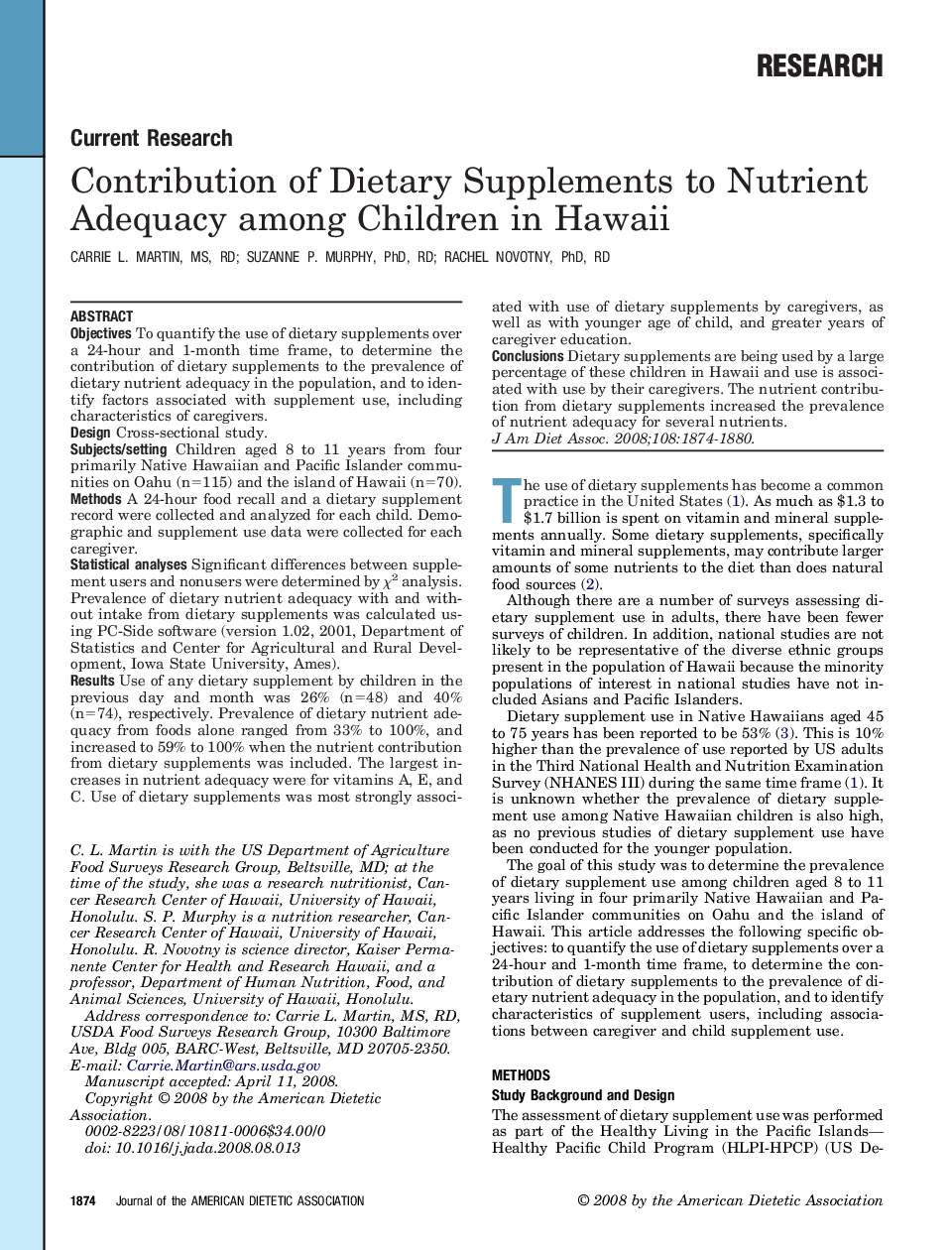| Article ID | Journal | Published Year | Pages | File Type |
|---|---|---|---|---|
| 2655092 | Journal of the American Dietetic Association | 2008 | 7 Pages |
ObjectivesTo quantify the use of dietary supplements over a 24-hour and 1-month time frame, to determine the contribution of dietary supplements to the prevalence of dietary nutrient adequacy in the population, and to identify factors associated with supplement use, including characteristics of caregivers.DesignCross-sectional study.Subjects/settingChildren aged 8 to 11 years from four primarily Native Hawaiian and Pacific Islander communities on Oahu (n=115) and the island of Hawaii (n=70).MethodsA 24-hour food recall and a dietary supplement record were collected and analyzed for each child. Demographic and supplement use data were collected for each caregiver.Statistical analysesSignificant differences between supplement users and nonusers were determined by χ2 analysis. Prevalence of dietary nutrient adequacy with and without intake from dietary supplements was calculated using PC-Side software (version 1.02, 2001, Department of Statistics and Center for Agricultural and Rural Development, Iowa State University, Ames).ResultsUse of any dietary supplement by children in the previous day and month was 26% (n=48) and 40% (n=74), respectively. Prevalence of dietary nutrient adequacy from foods alone ranged from 33% to 100%, and increased to 59% to 100% when the nutrient contribution from dietary supplements was included. The largest increases in nutrient adequacy were for vitamins A, E, and C. Use of dietary supplements was most strongly associated with use of dietary supplements by caregivers, as well as with younger age of child, and greater years of caregiver education.ConclusionsDietary supplements are being used by a large percentage of these children in Hawaii and use is associated with use by their caregivers. The nutrient contribution from dietary supplements increased the prevalence of nutrient adequacy for several nutrients.
